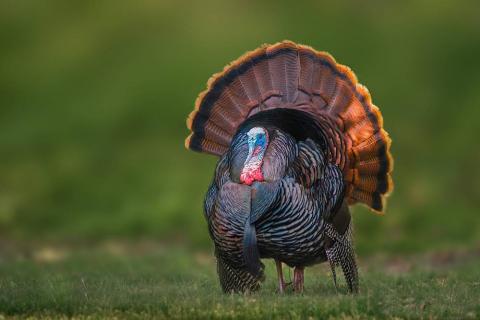Why and How to Hunt the Late Cow Elk Season with Josh Van Vlack

Editor’s Note: Josh Van Vlack, who lives in Cheyenne, Wyoming, has been hunting elk since 2001 and has been a Mossy Oak Pro since 2006. Van Vlack is a double dipper during elk season. Like many western hunters, Van Vlack knows that an elk or two can supply plenty of meat – really delicious meat – for his family all year long for a very low price, and he gets the recreational value of hunting elk as a bonus. Van Vlack has taken five elk, and his wife, Emma, has taken one elk, and she plans to take more this season. As most of us realize, boiled antlers make a very-thin soup, and eating elk tag stew is not the dream of most men and women who hunt elk. Although Van Vlack wants to take a 300-plus Pope and Young bull elk like most elk hunters dream of, he's not really disappointed when the bull elk season closes. This week we’ll tell you why.
 In the fall of the year, I really enjoy hunting upland birds and mule deer. After archery elk season ends, I hunt the late cow-elk season. During the cow-elk season, there’s much less hunting pressure, and I can extend my elk hunting season past the bull-elk season. In some units in Wyoming, we can hunt cow elk until December and through January 30. Our rifle bull-elk season ends about the end of October. The late-season cow-elk season begins around November 1st. My family and I like the taste of elk meat. So, the late-season cow-elk hunts enable me to put more meat in my freezer. In many of our units, if you fail to take a bull elk during archery season, your archery tag will allow you to take a cow elk in the late season. In parts of Wyoming, our late bull-elk season closes about the second week of November. So, out here in Wyoming, the term late-season elk usually refers to the cow-elk season.
In the fall of the year, I really enjoy hunting upland birds and mule deer. After archery elk season ends, I hunt the late cow-elk season. During the cow-elk season, there’s much less hunting pressure, and I can extend my elk hunting season past the bull-elk season. In some units in Wyoming, we can hunt cow elk until December and through January 30. Our rifle bull-elk season ends about the end of October. The late-season cow-elk season begins around November 1st. My family and I like the taste of elk meat. So, the late-season cow-elk hunts enable me to put more meat in my freezer. In many of our units, if you fail to take a bull elk during archery season, your archery tag will allow you to take a cow elk in the late season. In parts of Wyoming, our late bull-elk season closes about the second week of November. So, out here in Wyoming, the term late-season elk usually refers to the cow-elk season.
The real secret to consistently taking cow elk in the late season is to do a lot of scouting and glassing and waiting for the heavy snow. When the mountains have big snowstorms, all the elk will move down to the foothills. I’ll set up on top of a hill and look for the transition areas where the elk come out of the foothills, heading toward agricultural fields. During the late season, I've also learned to find cows in areas where active timber cutting is happening. The logging packs the snow down and provides open places that elk can move to and forage for something to eat. Some of the evergreens being cut down have moss on them, and the elk can feed on that moss, once the trees are on the ground. Many times, elk will be in those logging units all day long. As the snow in the mountains builds-up, often the logging units are the easiest spots to access and find elk. Generally, the roads are plowed open to make sure the logging trucks can get in and out. Then hunters can get much closer to the elk than we can at other times of the year. I hunt all public-access areas, and I look for private agricultural land or private grazing land right on the edge of the Bureau of Land Management (BLM) land and U.S. Forest Service land.



























